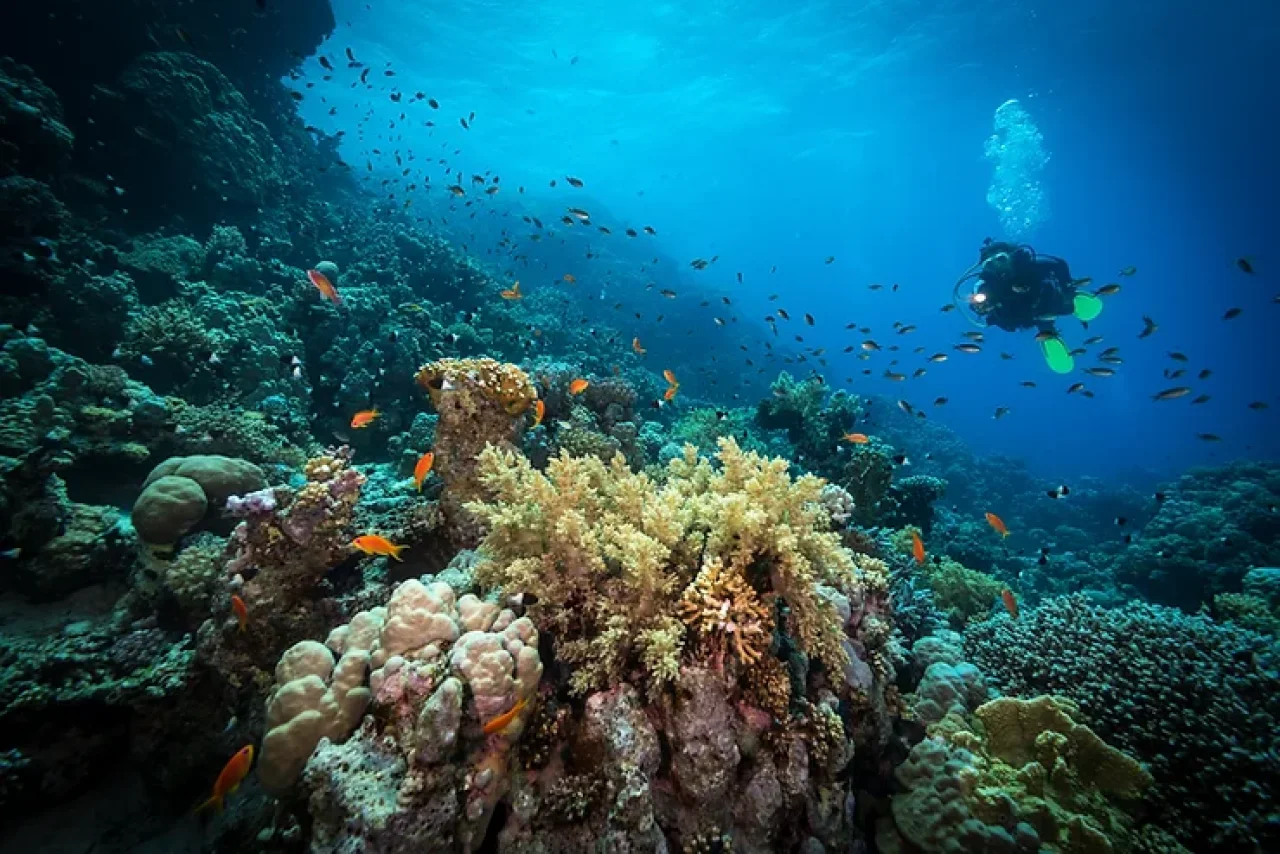A Concrete Solution To Coral Bleaching

Apart from being dubbed as the rainforest of the sea, coral reefs generate around US$30 billion dollars in economic benefits every year through fisheries, tourism, and coastal protection. Unfortunately, these biodiversity sanctuaries are disappearing from our oceans because of a phenomenon called bleaching. In this post, we’ll dive into this eco-threat and fish out some coral restoration methods. Spoiler: Partanna’s carbon-negative concrete could play a key role in solving this problem!
What Is Causing Coral Bleaching?
Short answer: Coral bleaching is caused by humans! To be more specific, global warming and coral bleaching are linked, as the latter happens when the ocean water temperature becomes too high. But what is the mechanism that leads to coral bleaching? When subjected to heat stress, corals expel the algae which normally live within them. Besides giving corals their beautiful colour, algae are their main food source. As a result of this loss, corals turn white and weak. In the long run, bleaching could eventually kill corals.
While not directly causing coral bleaching, ocean acidification is also damaging reefs. And you guessed it. Humans are again to blame. In particular, the more carbon emissions are released in the atmosphere, the more CO2 (acidic molecule) is dissolved into the ocean. Which is why its water pH is dropping. This chemistry alteration hinders the ability of corals to grow their skeleton.
Coral Reef Bleaching And Its Environmental Impact Worldwide
So, how much coral reef have we lost so far? According to the Global Coral Reef Monitoring Network, 14% of the world’s coral reefs have been destroyed by bleaching between 2009 and 2019 alone. Coral bleaching is still a pressing issue in 2023, impacting on different areas of the globe such as The Great Barrier Reef in Australia, The Caribbean, Thailand, Fiji, etc.
Last July, as a result of the unprecedented heat in the Florida Keys Reef Tract–the world’s third largest coral hotspot–coral bleaching occurred earlier than normal. The event was so intense that many corals died before a local restoration team could get them out of the nursery. And the whitening picture is expected to get even darker. Researchers recently estimated that coral bleaching due to climate change could affect 50% of the global ecosystem by 2035.
Why Do We Need Artificial Reefs Now
Stopping climate change is of course the most effective way of preventing coral bleaching. However, this will take time and, even in the best-case scenario, we’ll still have to deal with the delayed warming effects which will be triggered by all the pollution we’ve made so far.
Therefore, we must invest in coral reef restoration projects as a short-term solution. Coral reef restoration refers to a series of technologies that facilitate marine organisms’ natural recovery and growth. Among these, concrete-based artificial reefs or coral nurseries are making a splash. By controlling environmental conditions (e.g., sunlight exposure, predators, temperature, etc.), these man-made structures turn into a thriving habitat for coral larvae. Once corals reach maturity, they’re then transplanted to a natural reef. There are many examples of artificial reefs popping up around the world. For instance, the pyramidic design adopted by Grenada's Grand Anse Reef Regeneration Project (GARRP) has been one of the most successful attempts in regenerating corals and other marine life.
Although concrete-made artificial reefs represent an ideal growing medium for corals, they’re not immune to seawater corrosion. In fact, standard concrete is degraded by sulphate attack over time, thus having a short lifespan. Aside from having poor ocean resilience, traditional concrete fuel coral bleaching because of the carbon emissions released during its production.
Partanna’s concrete contribution
One of the several applications of our carbon-absorbing concrete is to support the construction of artificial reefs. Unlike traditional concrete, Partanna’s material gets stronger rather than weaker when exposed to seawater. Why is that? Because our formula contains brine, i.e. a highly saline solution.

The start-up Ocean Revive has already demonstrated that our carbon-sequestering concrete could be used to build a suitable infrastructure for fostering coral growth. We’re currently liaising with restoration project developers that would like to tap into our ocean-resilient blocks. Also, Partanna is aiming to turn its restoration efforts into high-quality carbon credits for businesses.
Conclusions
Coral reefs are a treasure we can’t afford to lose and restoration is the only way to save them in the short run. By harnessing Partanna’s brine-enhanced concrete, developers could boost the cost-effectiveness of their coral restoration programs. Get in touch today!
